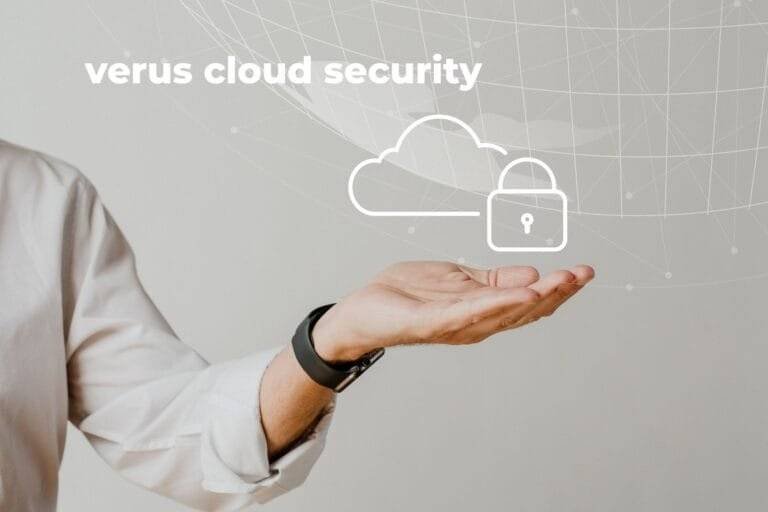Which Of The Following Are the Benefits Of Cloud Security Posture Management?
In today’s fast-growing digital world, more and more companies are shifting their operations to the cloud. This move makes it super important to have strong security measures in place. Cloud Security Posture Management (CSPM) is a key tool that comes into play here. CSPM tools help companies keep an eye on their cloud security, making sure their data and services are secure from possible threats. This proactive approach not only strengthens security but also helps with compliance and makes cloud operations run more smoothly.
CSPM has many benefits, meeting different security needs in the cloud. It automatically finds and fixes security risks, helping organizations strengthen their defenses, make compliance easier, and use cloud resources better. This introduction will dive deeper into the main benefits of using CSPM in a company’s cloud strategy, showing how essential it is for modern cloud management and security.
Enhanced Visibility and Control
One of the main benefits of Cloud Security Posture Management (CSPM) is that it helps to improve visibility and control across cloud environments. As companies use many applications and store data on different cloud platforms, it gets tough to keep track of everything. CSPM tools help shine a light on these previously hidden parts of the cloud, giving a clear picture of the cloud infrastructure. This includes live updates on which services are active, where data is kept, and who can access it.
But having this visibility isn’t just about seeing what’s there; it’s also about managing it well. CSPM allows IT teams to apply the same security rules and control settings across all cloud resources. Whether it’s stopping unauthorized access or making sure no service has too much power, CSPM tools give organizations the control they need to keep up their security standards. By using these tools, companies can quickly spot and fix security slips and compliance issues, and even handle these fixes automatically. This cuts down the time that cyber threats have to take advantage of weaknesses. This proactive way of handling cloud security not only boosts operational control but also strengthens overall security, making CSPM a crucial tool in today’s cloud management.
Compliance Assurance
In the complicated world of rules that control data protection and privacy, Cloud Security Posture Management (CSPM) is a vital tool for making sure companies follow the law. As businesses operate in different regions and industries, they must meet various legal demands like GDPR, HIPAA, and PCI-DSS. Each of these has specific rules about how data should be handled and protected. CSPM helps by constantly checking cloud environments to make sure they keep up with the latest compliance standards.
CSPM tools automate the task of finding and fixing compliance issues, which greatly lowers the chance of human mistakes and reduces the workload for IT teams. They provide detailed compliance reports and immediate alerts about possible violations, making it easier for organizations to fix problems before they lead to fines or harm to their reputation. This continuous monitoring and automation not only help maintain strong security but also build trust among stakeholders, clients, and regulatory bodies that the organization is dedicated to meeting the highest standards of data protection.
CSPM’s strong compliance frameworks make sure that all cloud activities follow the law and meet specific industry security needs. This assurance is crucial for keeping the integrity and trust of business operations in the cloud, ultimately safeguarding both the company and its customers.
Threat Detection and Mitigation
Cloud Security Posture Management (CSPM) is good at improving how organizations detect and handle threats. In the constantly changing world of cybersecurity, where new weaknesses and attack methods keep popping up, CSPM offers a strong and active defense. It continuously checks cloud environments and is designed to spot potential security threats from setup mistakes that attackers could take advantage of to unusual user activities that might suggest a security breach.
A major strength of CSPM in detecting threats is its use of advanced analytics and machine learning to analyze huge amounts of data. These technologies help CSPM systems not only recognize known threats but also spot unusual patterns that might indicate new or changing risks. This forward-looking threat intelligence is essential for staying ahead of attackers and stopping potential issues before they turn into serious breaches.
When threats are found, CSPM tools are crucial for quick response and handling. They can automatically send alerts and often start pre-set actions to fix vulnerabilities quickly. This could include changing security settings, isolating affected systems, or taking away access rights all important steps in stopping and reducing damage. By using these automated features, CSPM helps security teams respond to threats quickly and accurately, reducing potential harm and boosting the organization’s overall ability to withstand cyber threats.
Risk Assessment and Management
Cloud Security Posture Management (CSPM) is an important tool for doing in-depth risk assessments and creating effective risk management strategies in cloud environments. This aspect of CSPM is vital because it allows organizations to not only spot potential risks but also rank them based on how severe they are and how much they could affect business operations. By continuously watching and analyzing how the cloud is set up and operated, CSPM tools help to identify weak spots that could lead to security issues or data loss.
The risk assessment process with CSPM involves a detailed look at the cloud infrastructure to find areas where security policies might not be up to standard or where stronger controls are needed. This includes checking for setup errors, insufficient access controls, and not meeting security standards all serious risks. Additionally, CSPM solutions can simulate possible attack scenarios to predict how threats might break into the system. This forward-thinking approach lets organizations fix problems before they are taken advantage of by harmful actors.
After assessing risks, CSPM is crucial in managing them by helping to prioritize and fix identified risks. It automates the application of security policies to make sure all cloud assets are set up securely and consistently. This automation makes the management process smoother and reduces the chance of human mistakes, which are often a big security risk. Moreover, CSPM’s ongoing monitoring means that any departures from the standard security settings are quickly found and fixed, keeping the cloud environment secure and resilient over time.
Improved Security Posture Through Automation

Cloud Security Posture Management (CSPM) greatly improves an organization’s security by smartly using automation. Automation is key in CSPM, allowing for quicker, more consistent, and mistake-free management of security settings and policies across different cloud platforms. By automating both simple and complex tasks, CSPM not only makes operations more efficient but also boosts security by reducing the risks that come with doing things manually.
The automation features of CSPM tools cover various parts of managing cloud security, such as automatically finding setup mistakes and security holes, applying the best security practices, and fixing problems right away. For example, if a CSPM tool finds that a cloud storage area is set to be open to the public, it can automatically change the settings to protect the data, greatly lowering the chance of data leaks or unauthorized access.
Moreover, automation through CSPM ensures that security policies are consistently applied to all cloud resources, no matter how large or complex. This consistency is vital for keeping a strong security stance because it removes irregularities that cyber threats could exploit. Also, CSPM’s ongoing compliance monitoring automates the process of compliance reporting, which makes auditing simpler and ensures that organizations meet legal requirements without needing manual checks.
By using automation, CSPM not only strengthens an organization’s security measures but also offers a flexible framework that can adapt to new threats, grow with the organization, and continually improve cloud security practices. This enhanced security posture through automation is crucial for organizations that want to protect their assets in the quickly changing cloud environment.
In conclusion
Cloud Security Posture Management (CSPM) is a really useful tool for companies that want to keep their cloud storage safe. It does this by giving them a better view and more control over their cloud environment. This allows them to easily spot and fix any security problems before they cause trouble. CSPM also helps companies follow the rules by constantly checking their cloud setup to make sure it meets all the regulations. On top of that, CSPM can automatically find and fix security threats quickly, which helps minimize the damage if someone tries to hack into the system. It also helps companies figure out which security weaknesses are the most important to fix first.
Using CSPM makes it easier for companies to keep their cloud environment secure. It does this by automating tasks, making security management less complicated and faster. CSPM is a crucial part of modern cloud security. It gives companies the tools and abilities they need to safely navigate the complex world of cloud computing. As the cloud continues to change, CSPM remains essential for protecting sensitive data, reducing risks, and staying compliant with regulations for companies everywhere.
FAQs
What is Cloud Security Posture Management (CSPM)?
Imagine CSPM as your cloud security guard. It’s a tool that continuously scans your cloud environment for weaknesses and misconfigurations, like unlocked doors or open windows. CSPM helps you identify and fix these issues before they cause trouble.
Why is CSPM important?
Think of your cloud data as a valuable treasure. CSPM helps you build strong walls and security systems around it, protecting it from potential thieves (hackers) and accidental damage (misconfigurations).
Is CSPM a one-time solution?
No, CSPM is an ongoing process. As your cloud environment grows and changes, CSPM continuously monitors it, adapting to new threats and vulnerabilities.
Is CSPM expensive?
CSPM solutions come in various price ranges. Consider the value it brings in terms of increased security and reduced risks when making your decision.







